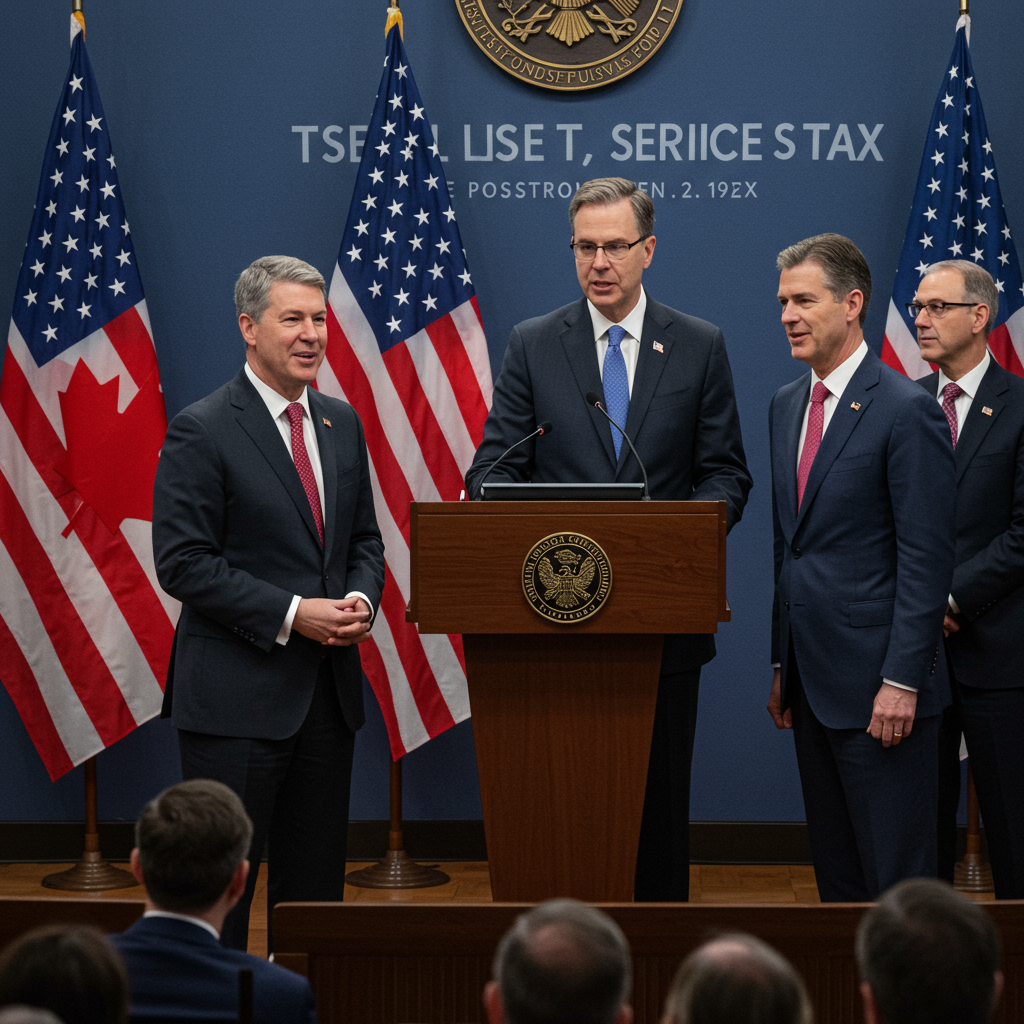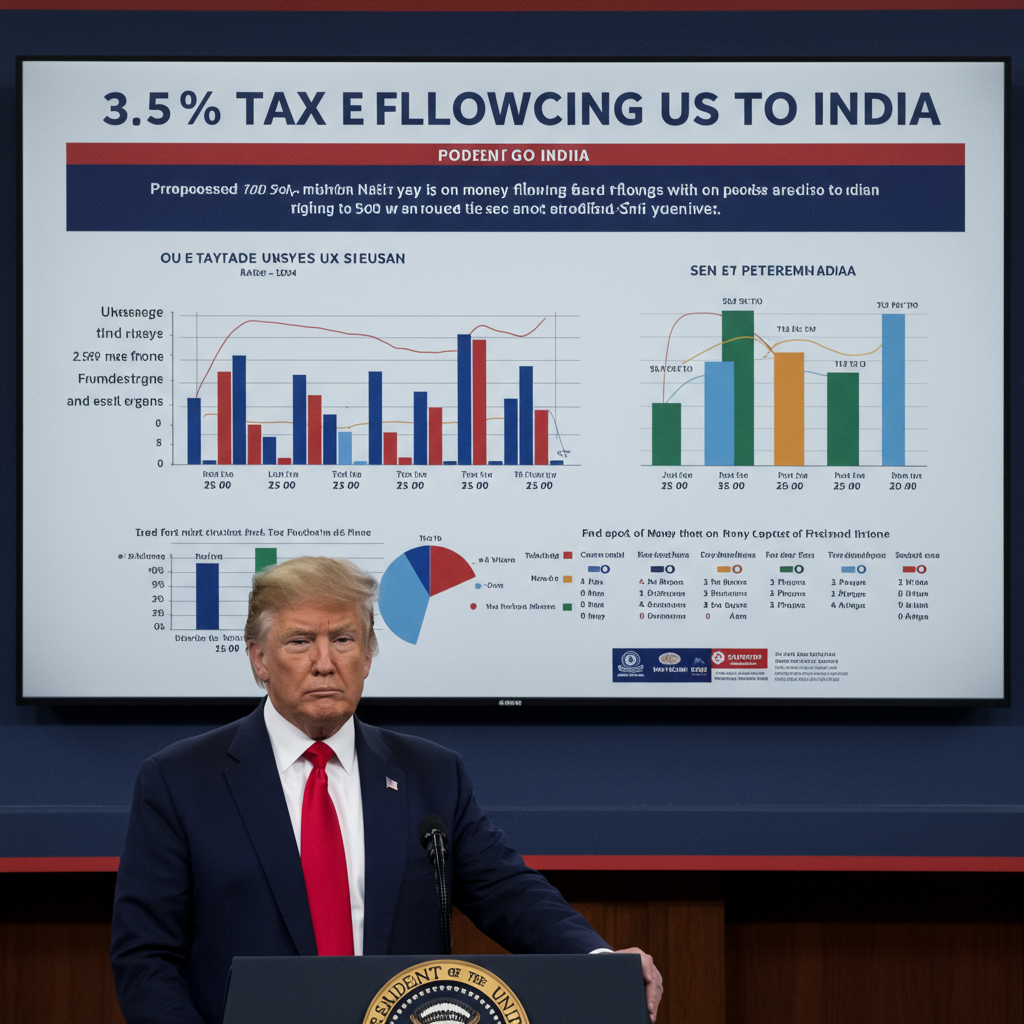In a significant development for North American trade relations, canada has announced the decision to scrap its controversial digital services tax (DST) aimed at large U.S. technology firms. This move comes after intense pressure from the White House, which quickly declared the outcome a major win for the United States and its tech industry. The reversal has paved the way for the immediate resumption of stalled trade negotiations between Ottawa and Washington.
The Digital Services Tax Dispute: A Point of Conflict
Canada’s planned digital services tax was designed to address concerns that global tech giants were generating substantial revenue from canadian users without contributing a proportionate amount in domestic corporate taxes. First proposed in 2020, the tax intended to impose a 3% levy on Canadian revenue exceeding $20 million (£15 million) earned by large domestic and foreign companies engaging with online users in Canada.
Major U.S. tech companies, including names like Amazon, Meta, Google (Alphabet), and Apple, stood to be significantly impacted. The tax was slated to take effect imminently, with the first payments due shortly, calculated retroactively to January 2022. Canadian estimates suggested the tax could collect over C$2 billion in its initial retroactive application and potentially bring in C$5.9 billion over the next five years.
Many countries worldwide are exploring new methods to tax multinational technology companies effectively, reflecting the challenges posed by their global reach and business structures under traditional tax frameworks. However, Canada’s unilateral approach became a flashpoint in its relationship with the United States.
U.S. Pressure and the “Caving” Narrative
The administration in Washington strongly opposed the Canadian tax, viewing it as discriminatory and harmful to American businesses. U.S. President Donald Trump publicly criticized the levy, labeling it a “direct and blatant attack on our country” designed to extract payments from successful American firms.
The tension escalated sharply when President Trump abruptly halted trade negotiations with Canada just days prior, specifically citing the planned DST as the reason. This action demonstrated the significant leverage the U.S. was willing to employ to prevent the tax’s implementation. White House Press Secretary Karoline Leavitt stated that Canada had made a mistake in attempting to impose the tax, which she argued would have harmed U.S. technology companies.
Following President Trump’s decisive action, Canadian Prime Minister Mark Carney reportedly spoke with the President on Sunday evening. Shortly thereafter, Canada announced its decision to rescind the digital services tax. On Monday, White House officials framed this reversal as a direct result of U.S. pressure. Press Secretary Leavitt asserted that Prime Minister Carney had “caved to President Trump and the United States of America,” portraying it as a significant “victory” for U.S. tech companies and American workers. She emphasized President Trump’s negotiation skills and reiterated the administration’s view that strong trade relationships with the U.S. are essential for other countries.
U.S. Commerce Secretary Howard Lutnick echoed this sentiment, publicly thanking Canada for removing the tax. He described the levy as potentially stifling American innovation and declared it would have been a “deal-breaker” for any trade agreement with the U.S. White House economic adviser Kevin Hassett confirmed that, with the removal of the tax threat, trade discussions between the two North American neighbors were back on track.
Canada’s Position: A Strategic Retreat?
From Ottawa’s perspective, the decision to drop the digital services tax was presented as a pragmatic move necessary to unblock broader trade negotiations with the United States. Prime Minister Mark Carney confirmed that the decision was part of a “bigger negotiation” aimed at resuming trade talks that had been suspended. He stated that Canada would halt the collection of payments and introduce legislation to formally scrap the tax.
Canadian Finance Minister François-Philippe Champagne issued a statement explaining the original rationale for the DST, noting it was intended to ensure large tech companies paid tax on revenues generated from Canadians. However, he reiterated that Canada’s long-held preference had always been for a multilateral agreement on digital services taxation, implying the unilateral tax was a temporary measure or leverage that ultimately proved unsustainable under U.S. pressure.
Professor Daniel Béland, a political science expert at McGill University, characterized Canada’s retreat as a “clear victory” for President Trump and big tech. He suggested that while abandoning the tax might have become necessary eventually, doing so specifically at this moment appeared aimed at appeasing Trump to get negotiations restarted. Béland noted that this sequence of events could make the Canadian Prime Minister seem vulnerable to the U.S. President’s assertive tactics.
Business groups in Canada, such as the Canadian Chamber of Commerce, welcomed the decision. They argued that the tax would have ultimately burdened Canadian consumers and businesses through increased costs. Ending the tax, they suggested, brought Canada closer to securing a “renewed, reliable trade deal” with the U.S.
Political Fallout in Canada
The decision to drop the tax sparked criticism from Canada’s opposition parties. Pierre Poilievre, leader of the Conservative Party, blasted the government for abandoning the tax at the “11th hour.” He referenced the ruling Liberal Party’s previous “elbows up” rhetoric, a hockey term used during a recent election campaign to signal a readiness to stand firm against President Trump’s demands.
Poilievre urged the Canadian government to use the resumed trade talks to insist on the U.S. immediately rescinding existing tariffs, particularly those on softwood lumber, and to prioritize securing gains for Canadian workers in these negotiations. The opposition framed the tax reversal as a concession without securing immediate reciprocal benefits from the U.S.
Broader Trade Tensions
This latest dispute over the digital services tax is set against a backdrop of persistent trade friction between the U.S. and Canada since President Trump began his second term. Past points of contention have included the imposition of significant tariffs on Canadian goods like steel, aluminum, and automobiles. Trump has also revived rhetoric questioning Canada’s sovereignty, including suggesting it could become a U.S. state.
The resumption of trade talks is now focused on easing these ongoing tariffs and negotiating a path forward for the economic relationship. The U.S. administration has signaled a looming deadline, with President Trump setting a July 9th date for countries to finalize trade deals or potentially face “harsh tariffs.” White House officials indicated that Trump is prepared to “set the rates” for countries not engaging in good-faith negotiations by this deadline, underscoring the continued pressure facing Canada in these resumed discussions.
Frequently Asked Questions
Why did Canada propose the digital services tax in the first place?
Canada initially proposed the digital services tax (DST) in 2020 to address concerns that large multinational technology companies were generating significant revenue from Canadian users but not paying a fair amount of corporate tax domestically. The tax aimed to ensure these companies contributed more to the Canadian economy based on their local earnings, especially as global tax frameworks struggled to keep pace with the digital economy.
How did the U.S. react to Canada’s planned tech tax, and what was the impact?
The United States government strongly opposed Canada’s digital services tax, calling it unfair and harmful to American tech companies. President Trump labeled it a “blatant attack” and responded by suspending trade negotiations with Canada. This pressure escalated tensions significantly and ultimately led Canada to rescind the tax, paving the way for trade talks to resume but highlighting the U.S.’s willingness to use economic leverage.
What are the broader implications of Canada dropping the tax on U.S.-Canada relations and trade talks?
Canada’s decision to drop the tax, widely seen as yielding to U.S. pressure, clears an immediate obstacle for trade talks. However, it also underscores the power dynamic in the relationship and may make Canada appear vulnerable to U.S. demands. The resumed talks will now focus on resolving existing issues, particularly U.S. tariffs on Canadian goods, with the backdrop of a looming U.S. deadline for trade deals adding further urgency and complexity to the negotiations.
Conclusion
Canada’s decision to withdraw its digital services tax represents a clear de-escalation in a trade dispute that had threatened to sever negotiations with the United States. While Canadian officials framed the move as a necessary step for resuming crucial trade talks, the White House’s swift declaration of victory underscores the perception that U.S. pressure directly led to the policy reversal. The lifting of this specific tax threat allows Washington and Ottawa to return to the negotiating table, but the broader challenges of existing tariffs and the path towards a stable, reliable trade relationship remain significant hurdles to overcome. The outcome highlights the complexities and pressures facing countries seeking to unilaterally tax global tech giants in the current international trade landscape.



